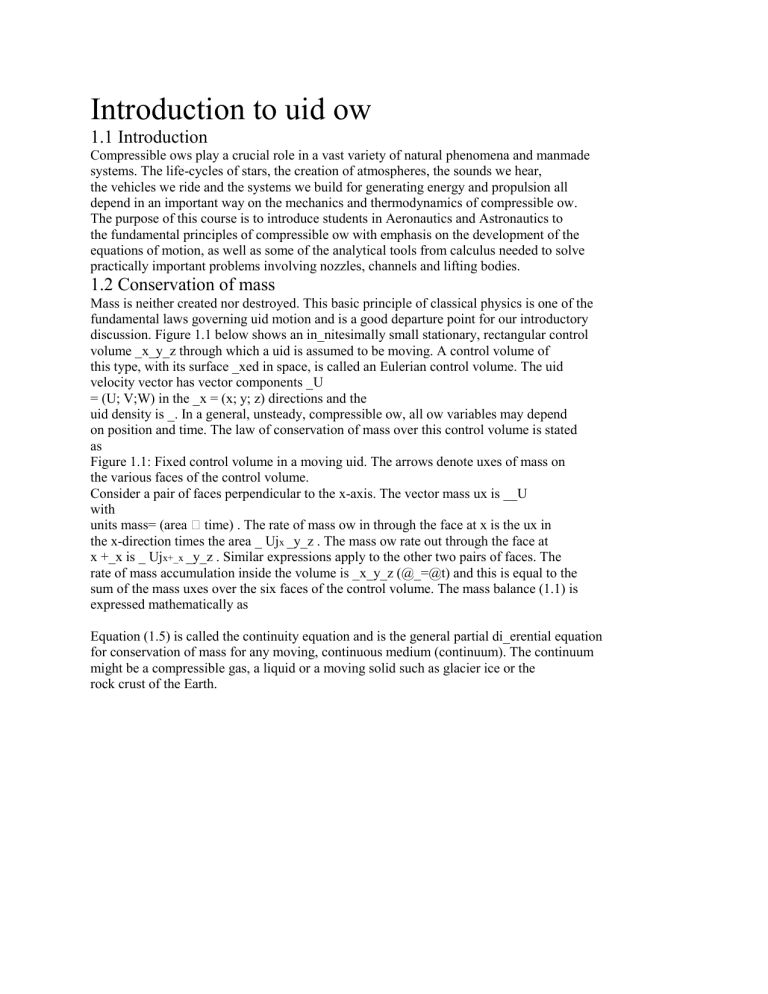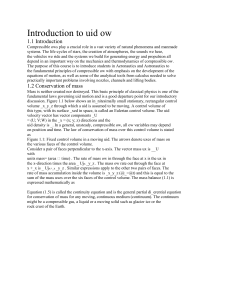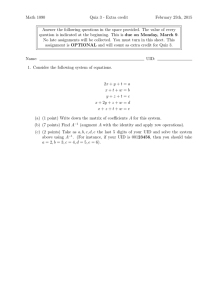
Introduction to uid ow 1.1 Introduction Compressible ows play a crucial role in a vast variety of natural phenomena and manmade systems. The life-cycles of stars, the creation of atmospheres, the sounds we hear, the vehicles we ride and the systems we build for generating energy and propulsion all depend in an important way on the mechanics and thermodynamics of compressible ow. The purpose of this course is to introduce students in Aeronautics and Astronautics to the fundamental principles of compressible ow with emphasis on the development of the equations of motion, as well as some of the analytical tools from calculus needed to solve practically important problems involving nozzles, channels and lifting bodies. 1.2 Conservation of mass Mass is neither created nor destroyed. This basic principle of classical physics is one of the fundamental laws governing uid motion and is a good departure point for our introductory discussion. Figure 1.1 below shows an in_nitesimally small stationary, rectangular control volume _x_y_z through which a uid is assumed to be moving. A control volume of this type, with its surface _xed in space, is called an Eulerian control volume. The uid velocity vector has vector components _U = (U; V;W) in the _x = (x; y; z) directions and the uid density is _. In a general, unsteady, compressible ow, all ow variables may depend on position and time. The law of conservation of mass over this control volume is stated as Figure 1.1: Fixed control volume in a moving uid. The arrows denote uxes of mass on the various faces of the control volume. Consider a pair of faces perpendicular to the x-axis. The vector mass ux is __U with units mass= (area � time) . The rate of mass ow in through the face at x is the ux in the x-direction times the area _ Ujx _y_z . The mass ow rate out through the face at x +_x is _ Ujx+_x _y_z . Similar expressions apply to the other two pairs of faces. The rate of mass accumulation inside the volume is _x_y_z (@_=@t) and this is equal to the sum of the mass uxes over the six faces of the control volume. The mass balance (1.1) is expressed mathematically as Equation (1.5) is called the continuity equation and is the general partial di_erential equation for conservation of mass for any moving, continuous medium (continuum). The continuum might be a compressible gas, a liquid or a moving solid such as glacier ice or the rock crust of the Earth.



